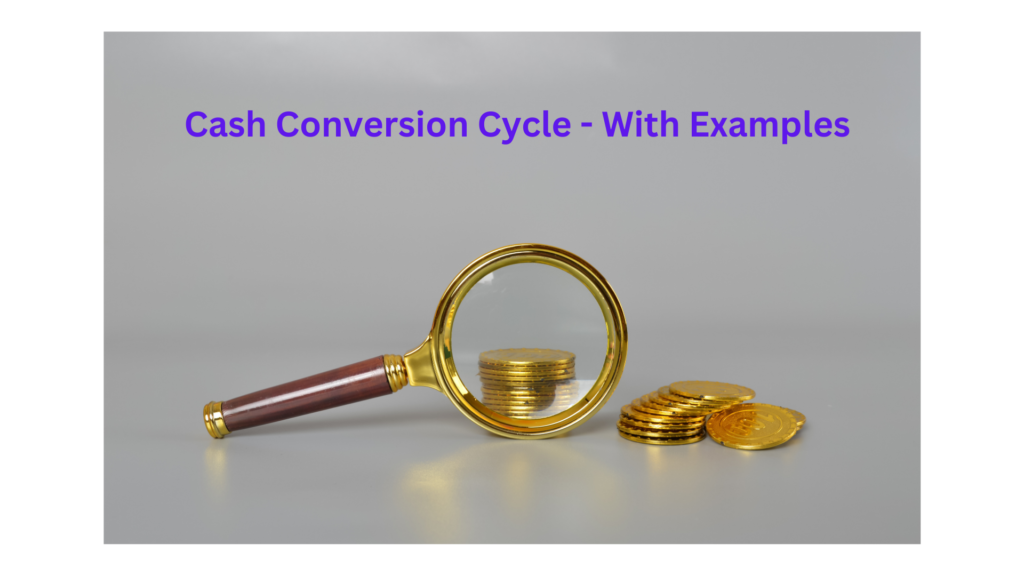The cash conversion cycle (CCC) is a financial metric that measures the time it takes for a company to convert its investments in inventory and other resources into cash flows from sales. It’s essentially a measure of how efficiently a company manages its working capital.
A negative cash conversion cycle means that the company is able to convert its investments in inventory and other resources into cash more quickly than it takes to pay off its suppliers. In other words, the company is able to collect cash from its customers before it needs to pay its suppliers for the resources used to generate those sales. This situation is generally considered favorable because it means the company is effectively using its working capital to finance its operations. It suggests strong liquidity and efficient management of inventory, receivables, and payables.
Companies with negative cash conversion cycles can use the cash generated from sales to reinvest in the business, repay debts, or distribute dividends to shareholders, thereby enhancing Total shareholder returns.
Significance of a Negative Cash Conversion Cycle
A negative cash conversion cycle implies that a company is able to convert its investments into cash more rapidly than it needs to pay off its suppliers. This scenario is favorable for several reasons:
- Enhanced Liquidity: With faster cash conversion, the company maintains a healthy cash position, enabling it to meet its financial obligations promptly.
- Efficient Working Capital Management: Companies with a negative CCC demonstrate efficient management of inventory, receivables, and payables, optimizing the utilization of working capital.
- Financing Operations: The surplus cash generated can be reinvested in the business to fuel growth initiatives, repay debts, or distribute dividends to shareholders.
- Improved Profitability: By minimizing the time between cash outflows and inflows, companies can bolster profitability and overall financial performance.
Strategies for Maximizing Efficiency
To achieve a negative cash conversion cycle and enhance operational efficiency, companies can implement the following strategies:
- Streamline Inventory Management: Adopt just-in-time inventory practices to minimize holding costs and reduce the inventory conversion period.
- Expedite Receivables Collection: Implement efficient invoicing and payment collection systems to shorten the receivables collection period.
- Negotiate Favorable Payment Terms: Negotiate extended payment terms with suppliers to optimize the payables deferral period without impacting relationships.
- Leverage Technology: Invest in advanced accounting software and analytics tools to automate processes, identify inefficiencies, and optimize the cash conversion cycle.
- Monitor and Adjust: Continuously monitor key metrics related to the CCC and make necessary adjustments to adapt to changing market conditions and business dynamics.
Examples of Negative Cash conversion Cycle
Technology Companies
A company with a negative cash conversion cycle can be found in the technology industry, particularly in software as a service (SaaS) companies (Example Microsoft). Technology Companies have a negative cash conversion cycle due to the following reasons.
- Subscription-Based Revenue Model: SaaS companies typically operate on a subscription-based revenue model, where customers pay a recurring fee for access to the software service. This results in a predictable and steady stream of revenue.
- Low Variable Costs: Once the software infrastructure is developed, the marginal cost of servicing each additional customer tends to be low. This means that as Technology Companies acquires more customers, its costs do not increase proportionally.
- Subscription Billing Cycle: SaaS companies often bill customers in advance for their subscriptions, either monthly, quarterly, or annually. This means that Technology Companies collects cash from customers before providing the service for the period covered by the subscription.
- Minimal Inventory and Receivables: Unlike traditional businesses, SaaS companies typically have minimal inventory or accounts receivable. There are no physical products to manufacture or ship, and customers pay upfront or shortly after receiving the service.
Due to these factors, a Technology company may have a negative cash conversion cycle. It collects cash upfront from customers, incurs minimal variable costs, and may delay payments to suppliers, resulting in a situation where it can operate with negative working capital. This allows such companies to use the cash it collects from customers to fund ongoing operations, invest in product development, or expand its customer base without the need for significant external financing.
Consumer Packaged Goods (CPG Companies)
Another example of Negative cash conversion cylce is from the CPG industry (Example: Pepsi). Here’s how CPG Companies achieves a negative cash conversion cycle.
- Efficient Inventory Management: Large CPG Companies (Example – Pepsi and Coca-Cola) have sophisticated inventory management systems in place to ensure its beverages are produced and distributed efficiently. They maintain low levels of inventory by employing just-in-time manufacturing practices, minimizing the cash tied up in inventory.
- Strong Distribution Network: These Companies have an extensive distribution network worldwide. They works closely with their partners to ensure products are delivered to retailers promptly and efficiently.
- Negotiated Payment Terms: These Companies, are dominant player in the industry, and have significant bargaining power with their suppliers. They negotiate favorable payment terms, allowing them to delay payments to suppliers while still receiving raw materials and packaging materials needed for production.
- Quick Sales Turnover: These Companies deal in Fast Moving Consumer goods and have high turnover rates. Their products are sold in large volumes across a wide range of retail channels, resulting in rapid cash collection from customers.
By combining these factors, these Companies are able to collect cash from customers quickly, delay payments to suppliers, and efficiently manage its inventory, resulting in a negative cash conversion cycle. This enables them to use the cash generated from sales to fund their operations, invest in marketing and distribution initiatives, and return value to shareholders.
In conclusion, the cash conversion cycle serves as a crucial indicator of a company’s financial health and operational efficiency. A negative CCC signifies strong liquidity, effective working capital management, and the ability to generate cash flows from sales faster than paying suppliers. By employing strategic measures to optimize the CCC, businesses can unlock opportunities for growth, profitability, and shareholder value enhancement in today’s dynamic business landscape.

